Forest Management Based on Local Culture of Dayak Kotabaru in the Perspective of Customary Law for a Sustainable Future and Prosperity of the Local Community
Abstract
1. Introduction
- Their tradition is still active, and the system of communal rights is implemented;
- It has strong economic ties between the community and the forest;
- It is an area with strong economic development;
2. Materials and Methods
2.1. Research Methods
“... a process to find the rule of law, legal principles, and legal doctrines to answer the problems of law. ... Normative legal research is conducted to produce new arguments, theories or concepts as prescriptions in solving problems.”[9]
2.2. Legal Material
- 1945 Constitution of the Republic of Indonesia;
- Law No. 41/1999 on Forestry; State Gazette No. 167/1999; Additional State Gazette No. 3888; and
- Law No. 18/2013 on Prevention and Eradication of Forest Destruction; State Gazette No. 130/2013; Additional State Gazette No. 5432.
2.3. Legal Analysis and Approach
- Statute approach was carried out by reviewing the 1945 Constitution of the Republic of Indonesia, Law No. 41/1999 on Forestry, and Law No. 18/2013 on Prevention and Eradication of Forest Destruction. This approach sought to uncover the interpretation of the statutory texts, both grammar and meanings.
- Conceptual approach was carried out by understanding and reviewing the principles, doctrines, theories and legal philosophies of forestry law and the Dayak Kotabaru customary law [12].
- Comparative approach was carried out by comparing a national law with other ones. In this case, we used a comparison between the Dayak Kotabaru customary law to the Law No. 41/1999 on Forestry, and Law No. 18/2013 on Prevention and Eradication of Forest Destruction in Indonesia. It was used to find differences and marked similarities regarding the principle of sustainable forest management [13].
3. Legislative Review
“The State shall recognize and respect, to be regulated by law, the homogeneity of societies with customary law along with their traditional rights for as long as they remain in existence and complying with societal development and with the principle of the Unitary State of the Republic of Indonesia.”
4. Results and Findings
4.1. The Problems in Current Forest Management
- State forest, i.e., forests in which the lands are not burdened with private ownership rights. This forest ownership belongs to the state. Thus, all types of ownership and management must be authorized by the state.
- Rights/Private forest is located on lands which are burdened with ownership rights. The ownership of these rights can be in the hands of individuals or legal entities.
- The customary forest is a forest in the territory of customary law communities.
- Conservation Forest Area consists of nature reserves (nature reserves and wildlife sanctuaries),
- Nature Tourism Areas (National Parks, Great Forest Parks, Nature Tourism Parks, and Hunting Parks).
- Protected Forest; and
- Production Forest.
- Creating a referral designation map on the outer boundary,
- designing temporary borders and passages,
- making boundary trenches in vulnerable locations, and
- announcing planned boundaries of forest areas, especially in places near private land.
- the level of deforestation;
- state financial losses in the forestry sector;
- legal uncertainty over forest areas caused by overlapping permits (agrarian disputes, overlapping gardens, mines that are not clean and clear).
- the welfare of indigenous peoples.
4.2. The Overview of Dayak Kotabaru as a Customary Law Community
“In view of the provisions contained in Articles 1 and 2, the implementation of the ulayat rights and other similar rights of customary law communities—as long as such communities in reality still exist—must be such that it is consistent with the national interest and the State’s interest and shall not contradict the laws and regulations of higher levels.”
- The Dayak Kotabaru tribes are still in the traditional form;
- Dayak Kotabaru have an institution in the form of traditional ruling device, i.e., “Kepala Adat”;
- Every one of Dayak Kotabaru’s communities have their own form of customary law jurisdiction;
- They have institutions and legal instruments in the form of “Balai Adat” and “Perangkat Adat”; and
- They still collect forest products in the surrounding forest areas for daily needs.
4.3. The Extent of Forest Management in Customary Law to Provide Livelihood for the Local People of Dayak Kotabaru
5. Discussion
- The need for harmonious regulation;
- The need for strengthening law enforcement;
- The need for legal certainty of forestry status;
- The need for conflict resolution in the concept of forest control;
- The need for maps of customary forest area;
- The need for resolving forestry and agrarian conflicts.
- The need for supervision on overlapping forest utilization permits.
6. Conclusions
Author Contributions
Funding
Acknowledgments
Conflicts of Interest
References
- Article 33, Paragraph 3 of the 1945 Constitution of the Republic of Indonesia. Available online: http://www.unesco.org/education/edurights/media/docs/b1ba8608010ce0c48966911957392ea8cda405d8.pdf (accessed on 20 March 2019).
- Muchsan. Hukum Administrasi Negara dan Peradilan Administrasi di Indonesia; Liberty: Jakarta, Indonesia, 2006. (In Indonesian) [Google Scholar]
- Asshiddiqie, J. UUD 1945: Konstitusi Negara Kesejahteraan dan Realitas Masa Depan; Speech at Faculty of Law University of Indonesia: Jakarta, Indonesia, 13 June 1998. (In Indonesian) [Google Scholar]
- BAPPENAS. Indonesian Climate Change Sectoral Roadmap (ICCSR) Summary Report Forestry Sector; Republic of Indonesia Synthesis Report: Jakarta, Indonesia, 2010. [Google Scholar]
- Antonio, W.; Griffith-Charles, C. Achieving land development benefits on customary/communal land. Land Use Policy 2019, 83, 124–133. [Google Scholar] [CrossRef]
- Ifrani. Kebijakan Hukum Pidana Terhadap Penyalahgunaan Perizinan Dalam Pengelolaan Kawasan Hutan. Ph.D. Thesis, Universitas Padjadjaran, Bandung, Indonesia, 2017. (In Indonesian). [Google Scholar]
- Nugroho, H.Y.; van der Veen, A.; Skidmore, A.K.; Hussin, Y.A. Expansion of traditional land-use and deforestation: A case study of an adat forest in the Kandilo Subwatershed, East Kalimantan, Indonesia. J. For. Res. 2018, 29, 495–513. [Google Scholar] [CrossRef]
- Veit, P.; Ding, H. Protecting Indigenous Land Rights Makes Good Economic Sense; World Resources Institute: Washington, DC, USA, 2016. Available online: https://www.wri.org/blog/2016/10/protecting-indigenous-land-rights-makes-good-economic-sense (accessed on 20 March 2019).
- Marzuki, P.M. Penelitian Hukum; Kencana: Jakarta, Indonesia, 2005. (In Indonesian) [Google Scholar]
- Freeman, M.D.A.; Lloyd, L. Introduction to Jurisprudence; Sweet & Maxwell LTD: London, UK, 2001. [Google Scholar]
- Fajar, M.; Ahmad, Y. Dualisme Penelitian Hukum, 1st ed.; RajaGrafindo Persada: Yogyakarta, Indonesia, 2010. (In Indonesian) [Google Scholar]
- Hart, H.L.A. The Concept of Law; Nusa Media: Bandung, Indonesia, 2009. [Google Scholar]
- Waxman, M.P. Teaching Comparative Law in the 21st Century: Beyond the Civil/Common Law Dichotomy. J. Leg. Educ. 2001, 51, 305. [Google Scholar]
- Ellydar, C. Negara Hukum, Demokrasi dan Konstalasi Ketatanegaraan Indonesia; Kreasi Total Media: Yogyakarta, Indonesia, 2007. (In Indonesian) [Google Scholar]
- Ni’matul, H.; Nazriyah, R. Teori dan Pengujian Peraturan Perundang-undangan; Nusamedia: Bandung, Indonesia, 2011. (In Indonesian) [Google Scholar]
- Bethan, S. Penerapan Prinsip Hukum Pelestarian Fungsi Lingkungan Hidup dalam Aktivitas Industri Nasional; Alumni: Bandung, Indonesia, 2008. (In Indonesian) [Google Scholar]
- Article 15 of Law No.41/1999 on Forestry. Available online: http://www.flevin.com/id/lgso/translations/Laws/Law%20No.%2041%20of%201999%20on%20Forestry.pdf (accessed on 20 March 2019).
- Safitri, M.A. Menuju Kepastian dan Keadilan Tenurial (edisi revisi 7 November 2011); Kelompok Masyarakat Sipil untuk Reformasi Tenurial: Jakarta, Indonesia, 2011. (In Indonesian) [Google Scholar]
- Meidinger, E. The Administrative Law of Global Private-Public Regulation: The Case of Forestry. Eur. J. Int. Law 2006, 17, 47–87. [Google Scholar] [CrossRef][Green Version]
- Hoadley, M.C. The Leiden Legacy: Concepts of Law in Indonesia (Review). J. Soc. Issues Southeast Asia 2006, 21, 124–128. [Google Scholar] [CrossRef]
- Syamsudin, M. Beban Masyarakat Adat Menghadapi Hukum Negara. Law J. 2008, 15, 338–351. (In Indonesian) [Google Scholar] [CrossRef]
- Wiliam, D.; Ngakan, P.O.; Achmad, A.; Tako, A. Dinamika Proses Desentralisasi Sektor Kehutanan di Sulawesi Selatan: Sejarah, Realitas dan Tantangan Menuju Pemerintahan Otonomi Yang Mandiri; Cifor: Bogor, Indonesia, 2005. (In Indonesian) [Google Scholar]
- ULM Faculty of Law. Lambung Mangkurat University Faculty of Law in Cooperation with Tanah Bumbu District Government, Monograph Entitled “Hak-Hak Adat Atas Tanah Suku Dayak Kotabaru”; ULM Faculty of Law: Banjarmasin, Indonesia, 2007. (In Indonesian) [Google Scholar]
- Cramb, R.A.; Wills, I.R. The role of traditional institutions in rural development: Community-based land tenure and government land policy in Sarawak, Malaysia. World Dev. 1990, 8, 347–360. [Google Scholar] [CrossRef]
- Robinson, B.E.; Holland, M.B.; Naughton-Treves, L. Does secure land tenure save forests? A meta-analysis of the relationship between land tenure and tropical deforestation. Glob. Environ. Chang. 2014, 29, 281–293. [Google Scholar] [CrossRef]
- Said, M.Y. Sanksi Pidana Sebagai Premium Remedium Bagi Pelaku Tindak Pidana Di Bidang Kehutanan; Research Paper; Universitas Islam Kalimantan Muhammad Arsyad Al-Banjari Banjarmasin: Kota Banjarmasin, Indonesia, 2018. (In Indonesian) [Google Scholar]
- Sahalessy, J. Peran Latupati Sebagai Lembaga Hukum Adat Dalam Penylesaian Konflik Antar Negeri Di Kecamatan Leihitu Propinsi Maluku. Sasi J. 2011, 17, 45–52. (In Indonesian) [Google Scholar]
- Rosmidah, R. Pengakuan Hukum Terhadap Hak Ulayat Masyarakat Hukum Adat Dan Hambatan Implementasinya. Inov. J. Law 2010, 2, 92–102. (In Indonesian) [Google Scholar]
- Mudjiono, M. Eksistensi Hak Ulayat dalam Pembangunan Daerah. J. Huk. UII 2004, 11. [Google Scholar] [CrossRef]
- Ferretti-Gallon, K.; Busch, J. What Drives Deforestation and What Stops It? A Meta-Analysis of Spatially Explicit Econometric Studies; CGD Working Paper 361; Center for Global Development: Washington, DC, USA, 2014. [Google Scholar]
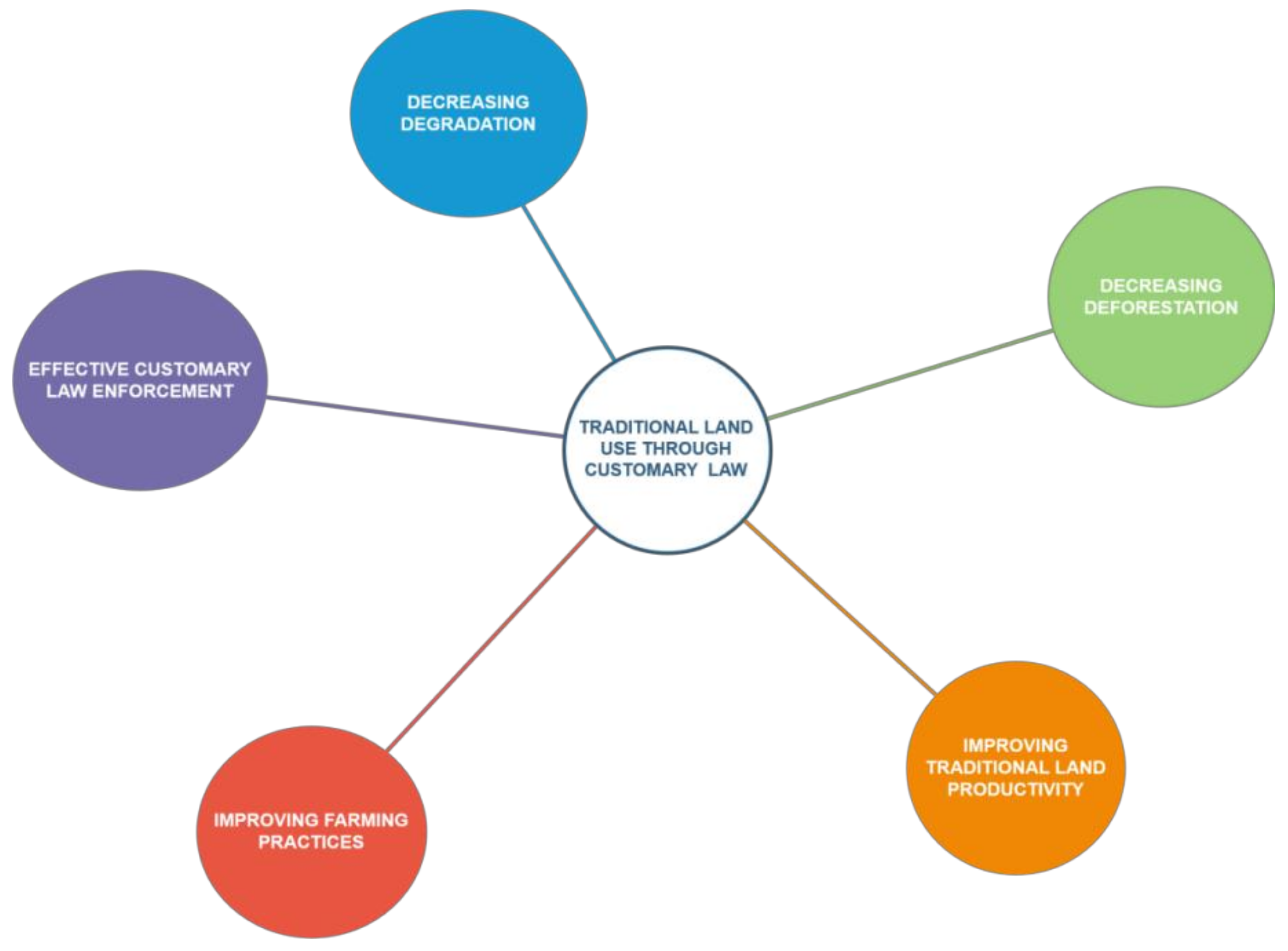
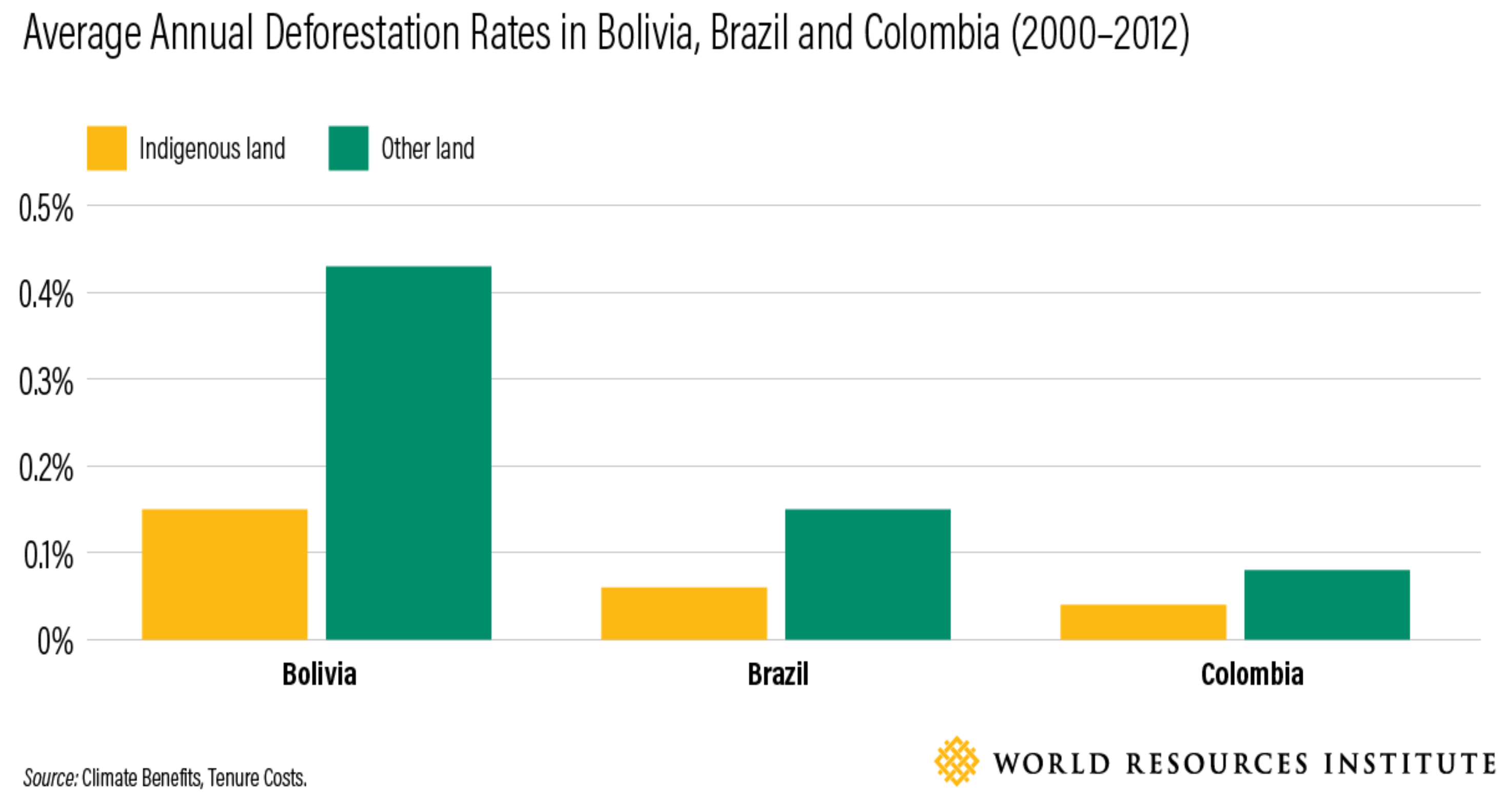
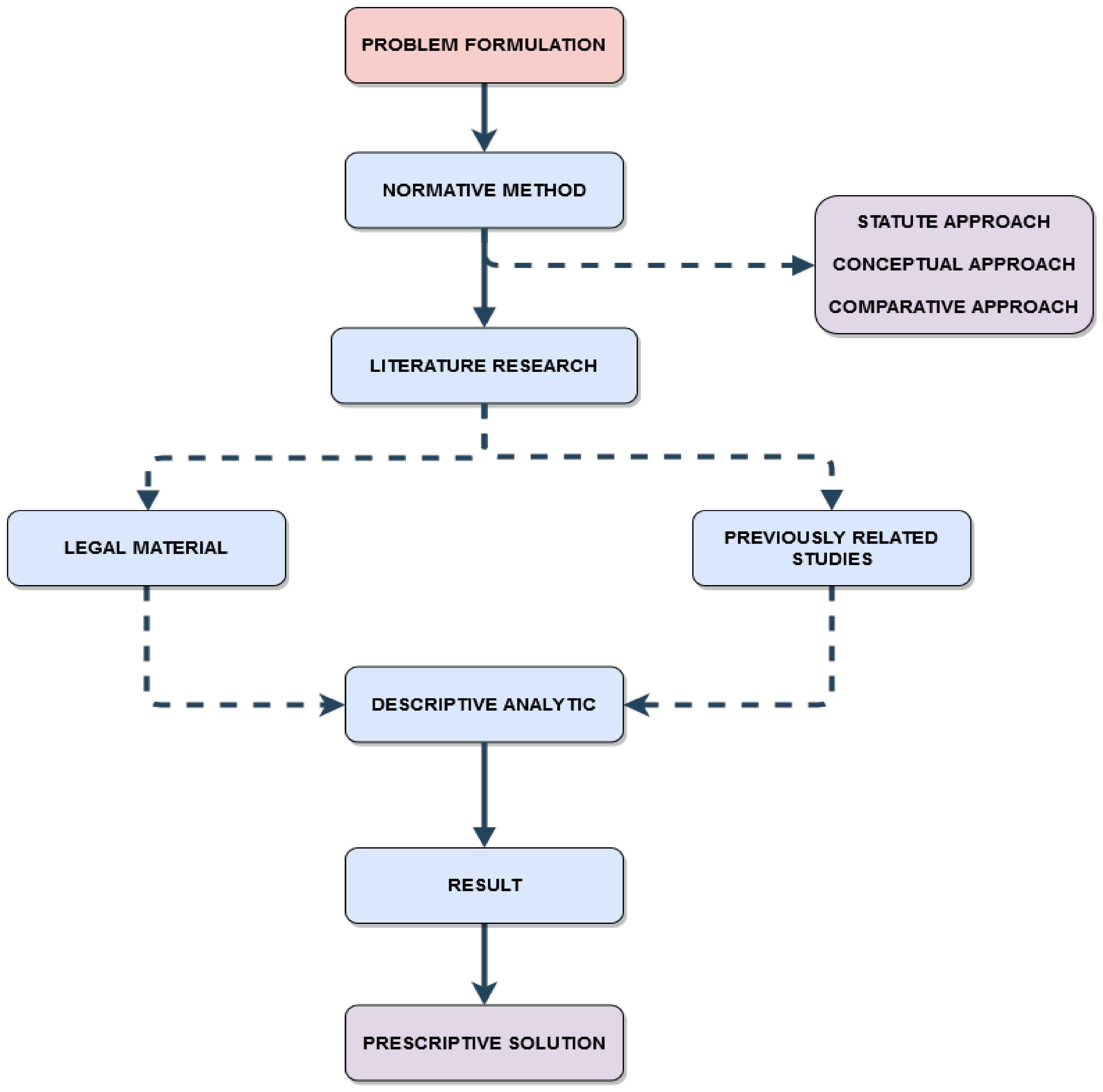


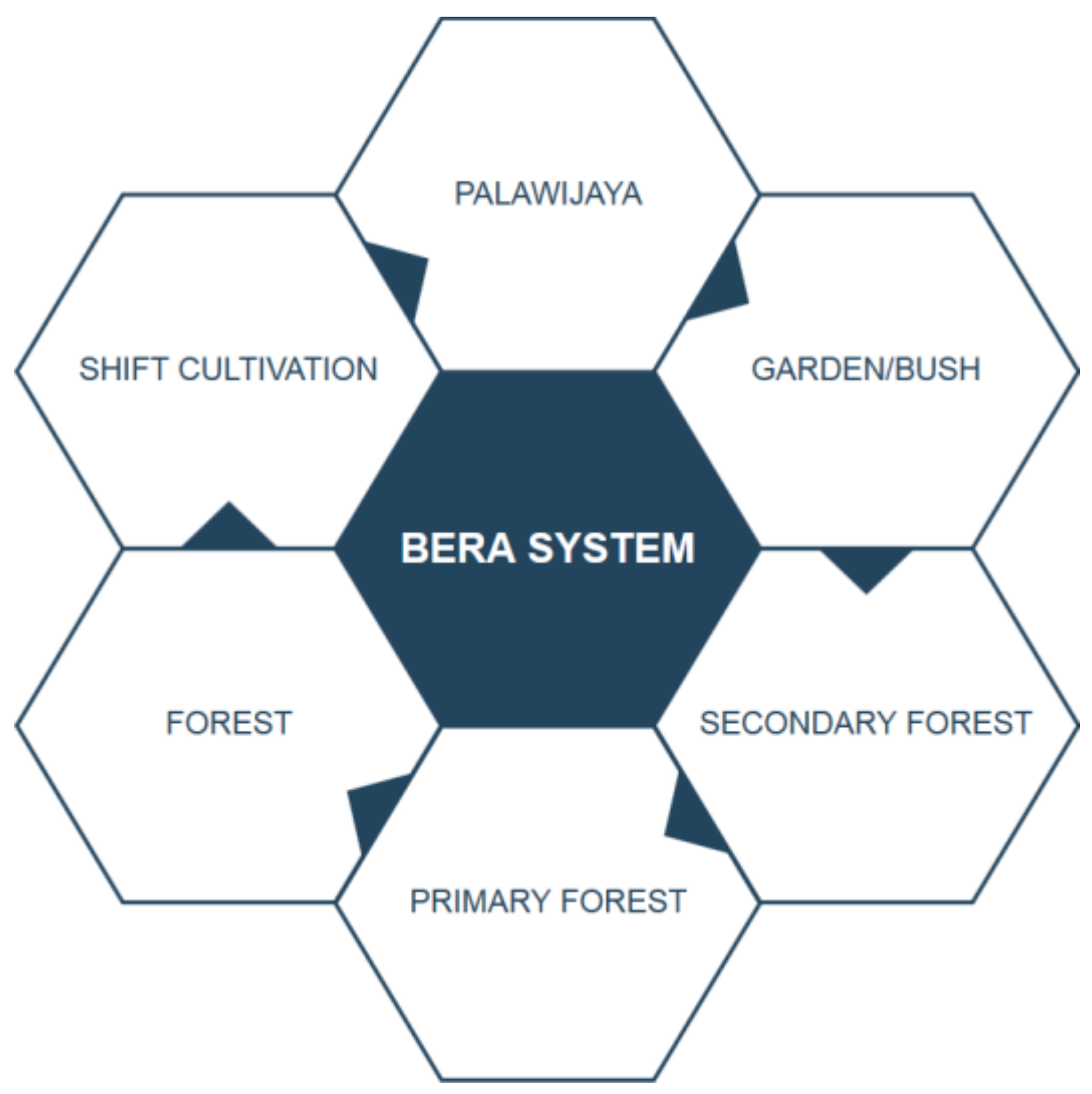


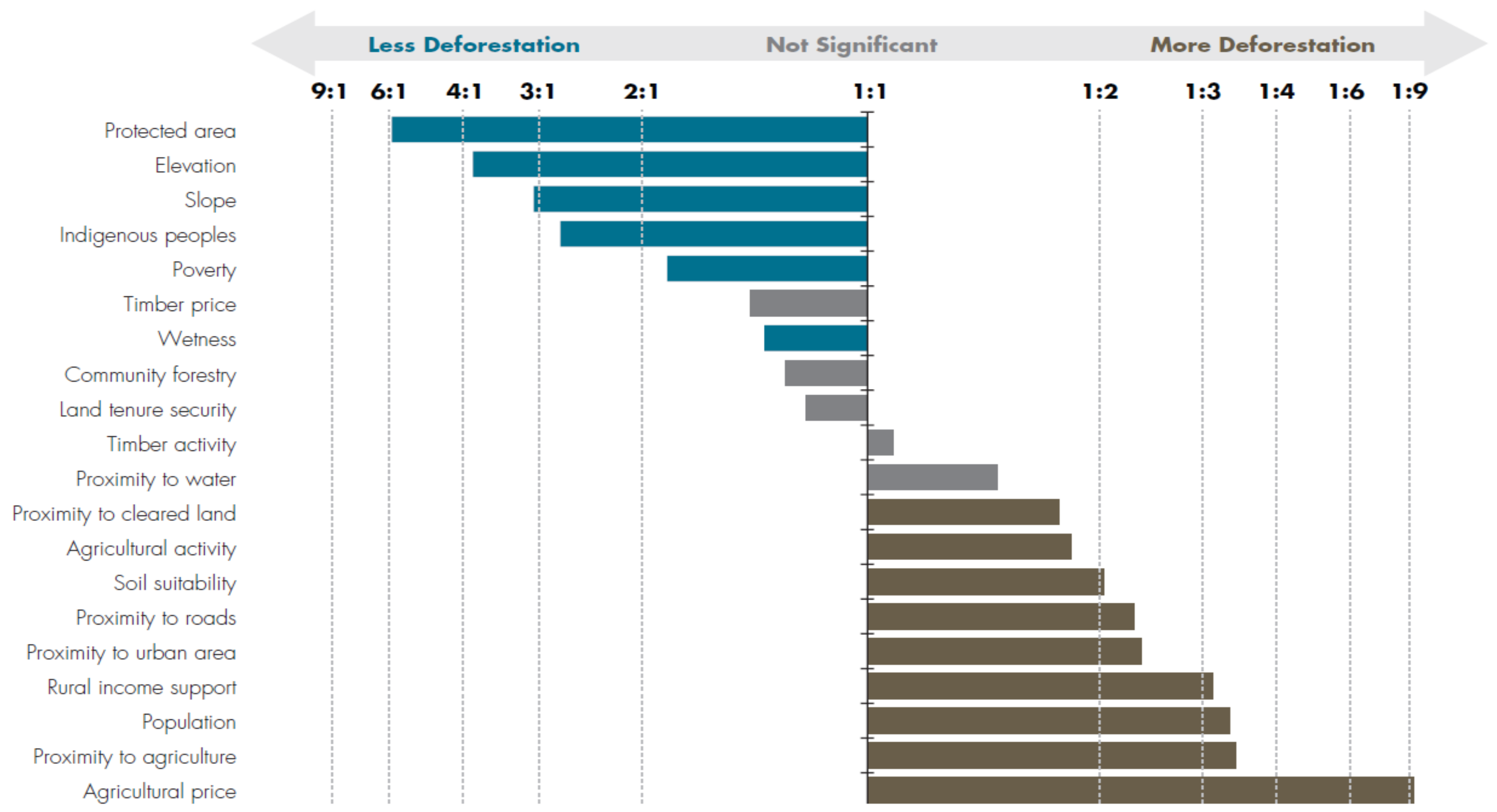
| Year | Policy Development |
|---|---|
| Before 1980 | Based on the Basic Law of Forestry No. 5/1967, forest areas were managed based on registers and partial designation of forest areas. |
| 1980−1992 | Spatial planning of forest areas is determined through the Forest Use Agreement (also known as TGHK) stipulated by the Minister of Agriculture by enforcing the regulations in Law No. 5/1990 on Conservation of Natural Resources and Their Ecosystems. |
| 1992−1999 | The enactment of Law No. 24/1992 on Spatial Planning. Spatial planning of forest areas is based on the results of the integration between the Provincial Spatial Planning (also known as RTRWP) and TGHK. |
| 1999−2005 | The enactment of Law No. 41/1999 on Forestry, spatial planning of forest areas is based on the appointment of forest and water areas designated by the Minister of Forestry. |
| 2005−2007 | The enactment of Law No. 32/2004 which replaced Law No. 22/1999 on Regional Governance. Spatial planning of forest areas began to be implicated due to the existence of several regions that proposed revisions to the regional Spatial Planning as well as the need for infrastructure areas with the expansion of government administrative areas. |
| 2007 | The enactment of Law No. 26/2007 which replaced Law No. 24/1992 on Spatial Planning. Spatial planning of forest areas was adjusted according to the process of the RTRWP revision. |
| 2008 | The enactment of Government Regulation No. 26/2008 on the National Spatial Planning (hereinafter, it will refer to as RTRWN). A guideline for the preparation of national long-term development plans, domestic medium term to realize integration, linkages, and balance of development between provinces, as well as harmony between sectors, location determination, and space functions for investment, national strategic spatial planning, and regional spatial planning. |
| 2010 | The enactment of Government Regulation No. 10/2010 on Procedures for Changing the Designation and Function of Forest Areas, as well as Government Regulation No. 24/2010 on the Use of Forest Areas, the designation and function of forest area can be changed in accordance with the dynamics of national development and the aspirations of the community. |
| 2013 | The enactment of Law No. 18/2013 on Prevention and Eradication of Forest Destruction which acts as a compliment and renewal of criminal orientation for Law No. 41/1999 on Forestry. |
| 2015 | The enactment of Government Regulation No. 104/2015 on Procedures for Changing the Designation and Function of Forest Areas regulates the procedures for changing the function of forest areas to stabilize and optimize the services of forests. |
© 2019 by the authors. Licensee MDPI, Basel, Switzerland. This article is an open access article distributed under the terms and conditions of the Creative Commons Attribution (CC BY) license (http://creativecommons.org/licenses/by/4.0/).
Share and Cite
Ifrani; Abby, F.A.; Barkatullah, A.H.; Nurhayati, Y.; Said, M.Y. Forest Management Based on Local Culture of Dayak Kotabaru in the Perspective of Customary Law for a Sustainable Future and Prosperity of the Local Community. Resources 2019, 8, 78. https://doi.org/10.3390/resources8020078
Ifrani, Abby FA, Barkatullah AH, Nurhayati Y, Said MY. Forest Management Based on Local Culture of Dayak Kotabaru in the Perspective of Customary Law for a Sustainable Future and Prosperity of the Local Community. Resources. 2019; 8(2):78. https://doi.org/10.3390/resources8020078
Chicago/Turabian StyleIfrani, Fathul Achmadi Abby, Abdul Halim Barkatullah, Yati Nurhayati, and M. Yasir Said. 2019. "Forest Management Based on Local Culture of Dayak Kotabaru in the Perspective of Customary Law for a Sustainable Future and Prosperity of the Local Community" Resources 8, no. 2: 78. https://doi.org/10.3390/resources8020078
APA StyleIfrani, Abby, F. A., Barkatullah, A. H., Nurhayati, Y., & Said, M. Y. (2019). Forest Management Based on Local Culture of Dayak Kotabaru in the Perspective of Customary Law for a Sustainable Future and Prosperity of the Local Community. Resources, 8(2), 78. https://doi.org/10.3390/resources8020078





